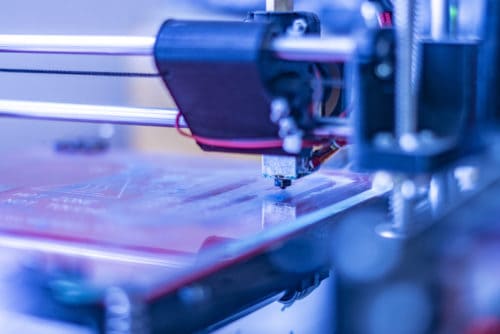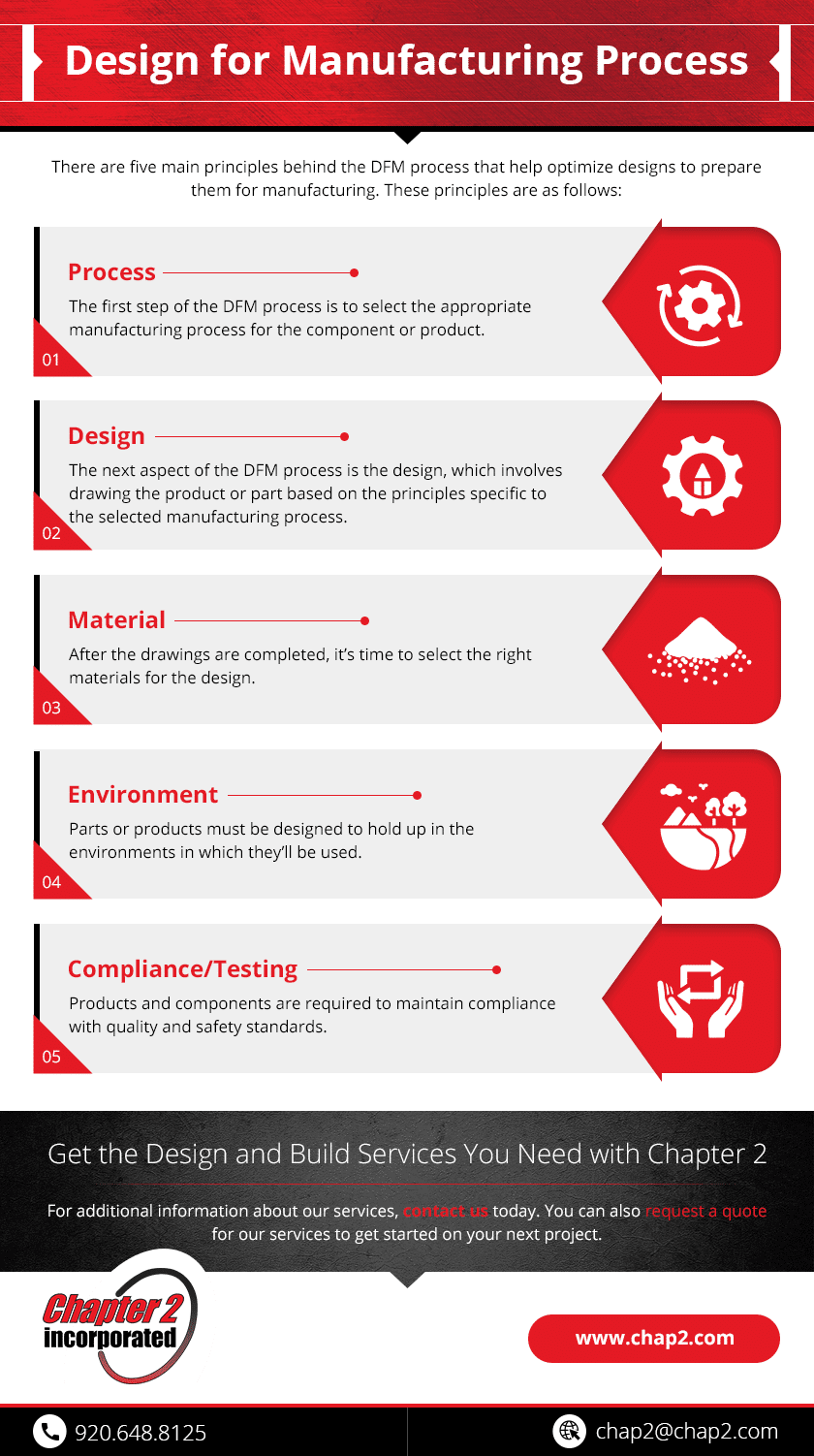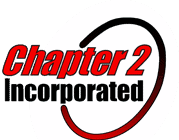What Is Design for Manufacturing?
 Design for manufacturing (DFM) is a process that entails designing components, parts, or products to optimize the manufacturing process used to produce them. Ultimately, DFM helps maximize the efficiency and cost-effectiveness of manufacturing processes through optimized product designs that address any potential discrepancies or mistakes. People may also refer to DFM as design for manufacturing and assembly (DFMA).
Design for manufacturing (DFM) is a process that entails designing components, parts, or products to optimize the manufacturing process used to produce them. Ultimately, DFM helps maximize the efficiency and cost-effectiveness of manufacturing processes through optimized product designs that address any potential discrepancies or mistakes. People may also refer to DFM as design for manufacturing and assembly (DFMA).
The Design for Manufacturing Process
(Click to Expand)

There are five main principles behind the DFM process that help optimize designs to prepare them for manufacturing. These principles are as follows:
1. Process
The first step of the DFM process is to select the appropriate manufacturing process for the component or product. For example, thermoforming may be a better process for low-volume parts compared to less efficient injection molding processes.
2. Design
The next aspect of the DFM process is the design, which involves drawing the product or part based on the principles specific to the selected manufacturing process.
3. Material
After the drawings are completed, it’s time to select the right materials for the design. Certain contributing factors to material selection may include mechanical, thermal, optical, electrical, and fire-retardant properties, along with color.
4. Environment
Parts or products must be designed to hold up in the environments in which they’ll be used. Otherwise, they won’t be able to function properly, regardless of the quality of the design.
5. Compliance/Testing
Products and components are required to maintain compliance with quality and safety standards. These standards could include industry standards along with company or third-party standards. It’s also important for manufacturers to have ISO certification.
What Are Advantages of Design for Manufacturing?
There are several key benefits of using DFM processes to design products before manufacturing. These include:
- Faster time-to-market
- Reduced production costs for parts and products
- Parts can be combined to reduce assembly steps and part quantities
- Quicker product development
- The ability to identify and eliminate faults or mistakes
- Safer workspaces resulting from removal and relocation of construction activities
- Less time needed to bring production up to speed
Considerations for Design for Manufacturing
There are several key factors to consider for the DFM process. These considerations include:
- Standardization of Parts and Materials. Standardized materials and parts can reduce the amount of time it takes to initiate production due to their consistency and availability.
- Minimized Part Count. The fastest way to lower production costs is to minimize the number of parts used, which subsequently reduces the amount of material used in manufacturing.
- Efficient Joining. It’s best to find ways to join parts together without the need for fasteners or adhesives of any kind. If they are required, try to figure out how to minimize the amount needed and use standard fasteners as much as possible.
- Minimized Reorientation of Components. Designs should ensure that a minimal amount of manual interaction is required for part or product manufacturing.
- Modular Assembly Creation. Using non-customized product modules can allow for changes to products without any loss of functionality.
- Simplification of Manufacturing. It’s important to minimize the number of manufacturing processes and operations to prevent them from becoming too complex.
- Appropriate Surface Finishes. Aesthetics may be important to a finished product, but it’s more important to choose a surface finish that allows for optimal functionality.
Get the Design and Build Services You Need with Chapter 2
Through effective DFM, you can make sure the manufacturing process for various parts and products is consistently efficient and profitable. With the help of Chapter 2 as your contract manufacturer, you can ensure manufacturing processes meet your project’s specific demands. For additional information about our services, contact us today. You can also request a quote for our services to get started on your next project.


Comments are closed